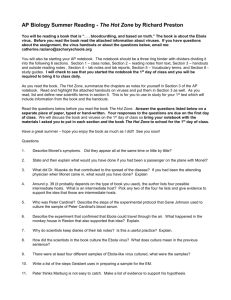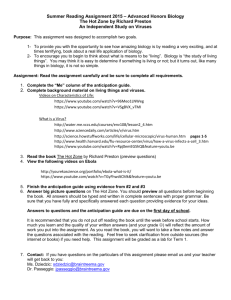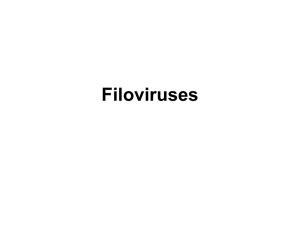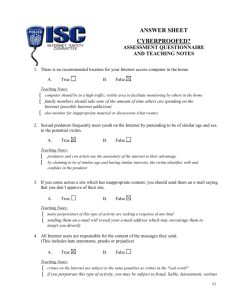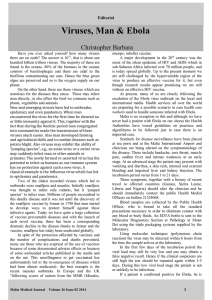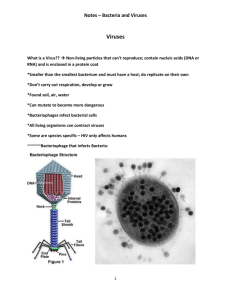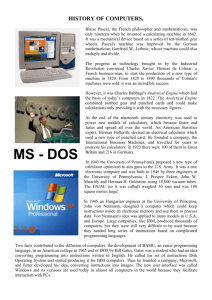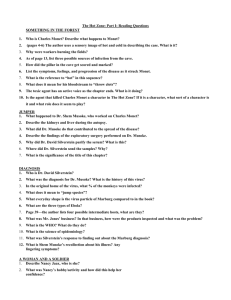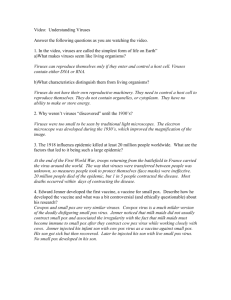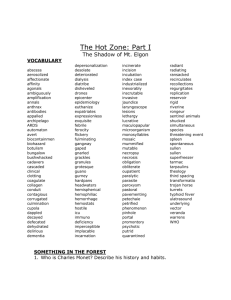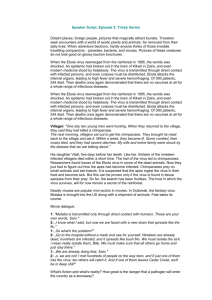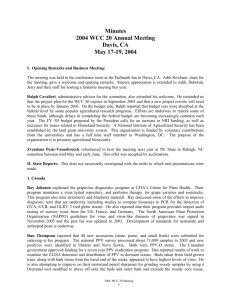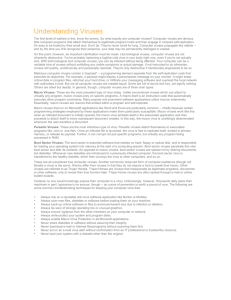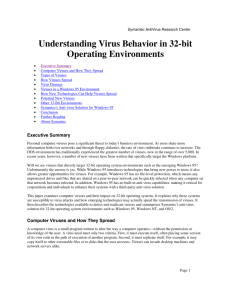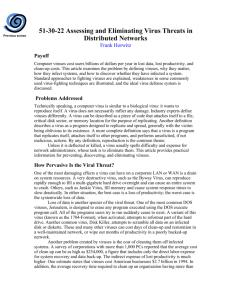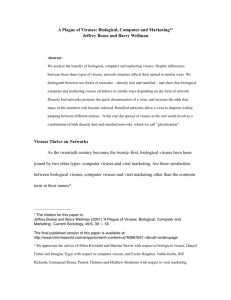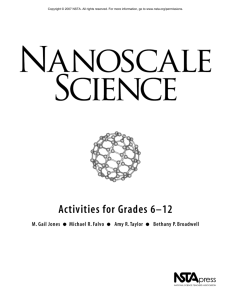The Hot Zone - We Heart Science
advertisement
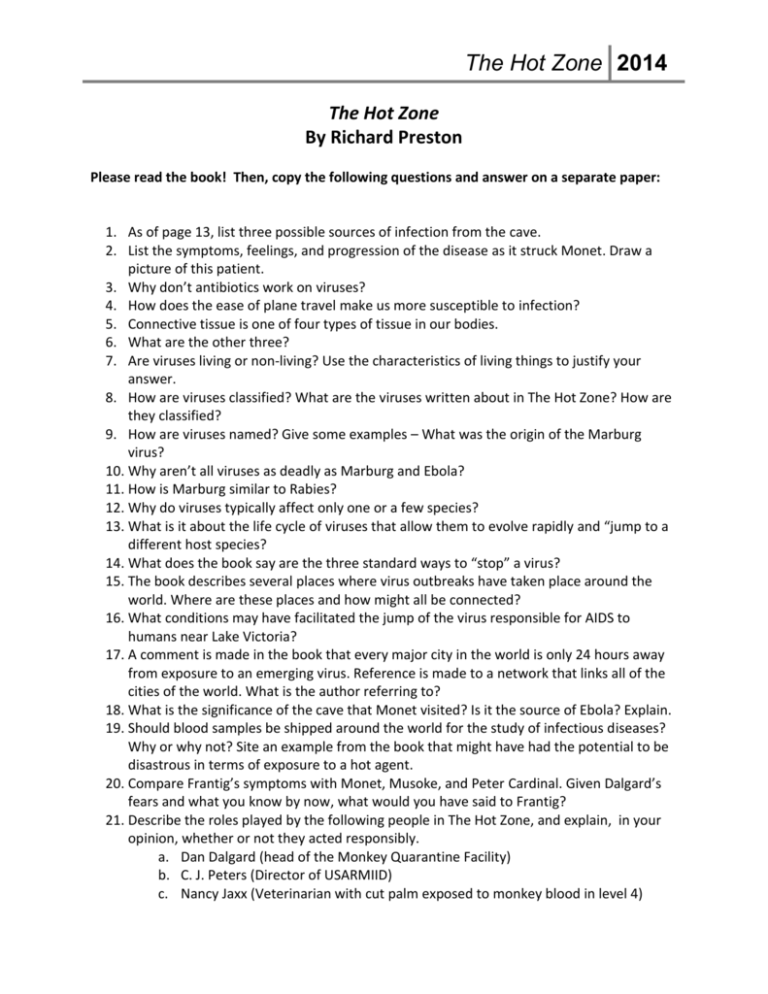
The Hot Zone 2014 The Hot Zone By Richard Preston Please read the book! Then, copy the following questions and answer on a separate paper: 1. As of page 13, list three possible sources of infection from the cave. 2. List the symptoms, feelings, and progression of the disease as it struck Monet. Draw a picture of this patient. 3. Why don’t antibiotics work on viruses? 4. How does the ease of plane travel make us more susceptible to infection? 5. Connective tissue is one of four types of tissue in our bodies. 6. What are the other three? 7. Are viruses living or non-living? Use the characteristics of living things to justify your answer. 8. How are viruses classified? What are the viruses written about in The Hot Zone? How are they classified? 9. How are viruses named? Give some examples – What was the origin of the Marburg virus? 10. Why aren’t all viruses as deadly as Marburg and Ebola? 11. How is Marburg similar to Rabies? 12. Why do viruses typically affect only one or a few species? 13. What is it about the life cycle of viruses that allow them to evolve rapidly and “jump to a different host species? 14. What does the book say are the three standard ways to “stop” a virus? 15. The book describes several places where virus outbreaks have taken place around the world. Where are these places and how might all be connected? 16. What conditions may have facilitated the jump of the virus responsible for AIDS to humans near Lake Victoria? 17. A comment is made in the book that every major city in the world is only 24 hours away from exposure to an emerging virus. Reference is made to a network that links all of the cities of the world. What is the author referring to? 18. What is the significance of the cave that Monet visited? Is it the source of Ebola? Explain. 19. Should blood samples be shipped around the world for the study of infectious diseases? Why or why not? Site an example from the book that might have had the potential to be disastrous in terms of exposure to a hot agent. 20. Compare Frantig’s symptoms with Monet, Musoke, and Peter Cardinal. Given Dalgard’s fears and what you know by now, what would you have said to Frantig? 21. Describe the roles played by the following people in The Hot Zone, and explain, in your opinion, whether or not they acted responsibly. a. Dan Dalgard (head of the Monkey Quarantine Facility) b. C. J. Peters (Director of USARMIID) c. Nancy Jaxx (Veterinarian with cut palm exposed to monkey blood in level 4) The Hot Zone 2014 d. Jerry Jaxx (responsible for monkey euthanasia) e. Nurse Mayinga (who in seeking treatment potentially exposed many people to her strain of Ebola) f. Researchers Peter Jahrling and Tom Geisbert (who whiffed the monkey tissue and chose not to disclose the information.) 22. Should the public be notified of potential risks and dangers? At what point in the story do you think an announcement should have been made? 23. What are the justifications for importing primates to the United States for research? What are the possible risks and benefits? Safety in the Laboratory 24. How might Dr. Shem Musoke have contracted the virus? How might the others who assisted in the care of Charles Monet have avoided infection? 25. On Page 185, Peter Jarhling and Tom Giesbert “whiffed” the culture flask. Why? What’s so dangerous about this? 26. Why is it important to observe all safety rules even in the high school laboratory regardless of whether it seems necessary or not. Site some instances in which proper safety procedures could have prevented the spread of the virus. Apply what you have learned about safety to your high school laboratory. Food for thought 27. Preston quotes Peter Jarhling on page 366, “Why is the Zaire stuff hot for humans? Why isn’t Reston hot for humans, when the strains are so close to each other?” Propose some answers to explain these observations. 28. The last chapter takes you and the author back to Kitum Cave. What do you suppose Preston intended to accomplish by his visit to Kitum Cave? Would you enter Kitum Cave in a space suit? Would you enter without a spacesuit? 29. Are emerging viruses such as Ebola a threat to human safety in light of the recent attention to bioterrorism? 30. “You can never know when life is exterminated.” Research the domain of extremophiles, organisms that live in very harsh conditions. We know now that these are more common than previously thought. What are the implications of a toxic extremophile that is infected with a lethal virus?
